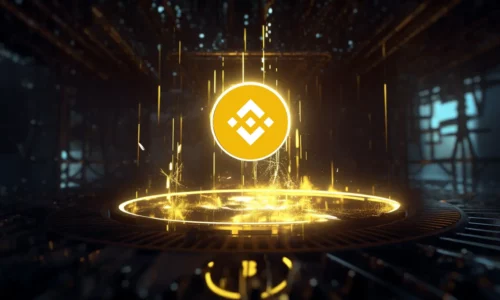Blockchain technology has revolutionized the digital landscape, offering decentralized solutions that have the potential to transform industries. Among the diverse array of blockchain platforms, Solana (SOL) stands out as a remarkable example of speed, scalability, and innovation. In this article, we’ll delve into the world of Solana and explore how it’s shaping the future of decentralized applications (DApps).
Introduction to Solana: Powering the Future of DApps
Solana, often referred to as the “high-performance blockchain,” has garnered significant attention for its ability to process thousands of transactions per second with incredibly low fees. Built to address the scalability challenges faced by some of its predecessors, Solana employs a unique combination of innovative technologies that allow it to stand as a pioneer in the blockchain ecosystem.
The Solana Ecosystem: A Seamless Experience for Developers
Breaking Down Technical Barriers
Solana’s architecture is designed to overcome the bottlenecks that hinder the scalability of other blockchains. By utilizing a combination of breakthrough technologies like Proof of History (PoH) and the Tower BFT consensus mechanism, Solana provides an environment where developers can build high-performance DApps without worrying about transaction speed limitations.
User-Centric Approach
Solana’s commitment to user experience extends beyond developers to everyday users. With rapid transaction confirmations and minimal fees, interacting with DApps on the Solana network becomes a seamless and efficient experience. This approach has garnered attention from various industries, including decentralized finance (DeFi), non-fungible tokens (NFTs), and more.
Solana’s Unique Features: A Closer Look
Proof of History (PoH): The Backbone of Solana
At the core of Solana’s speed lies the innovative Proof of History (PoH) mechanism. PoH acts as a cryptographic clock, providing historical records that enable validators to agree on the order of events without going through resource-intensive consensus processes. This unique approach significantly boosts the network’s efficiency and speed.
Parallel Processing and Tower BFT Consensus
Solana introduces parallel processing, allowing multiple transactions to be confirmed simultaneously. Alongside this, the Tower BFT consensus mechanism ensures the network’s security by mitigating the risks associated with network partitions. This dual focus on efficiency and security sets Solana apart in the blockchain landscape.
Use Cases and Real-World Applications
Decentralized Finance (DeFi)
Solana’s scalability makes it an ideal platform for DeFi applications. From decentralized exchanges to lending platforms, Solana’s fast transaction speeds and low fees provide an optimal environment for users to participate in the growing world of decentralized finance.
Gaming and NFTs
The gaming industry has also embraced Solana due to its capacity to handle complex in-game transactions and NFT minting. This scalability opens doors for innovative gaming experiences that were previously limited by slow and costly blockchain interactions.
Looking Ahead: Solana’s Impact on the Future
Solana’s rapid rise and its continuous efforts to enhance scalability have positioned it as a key player in the blockchain ecosystem. As adoption continues to grow and more developers recognize the advantages it offers, Solana has the potential to transform how we interact with technology, from finance to entertainment and beyond.
FAQs About Solana
- What sets Solana apart from other blockchains? Solana’s unique combination of PoH, parallel processing, and Tower BFT consensus results in unparalleled speed and scalability.
- Can I build my own DApp on Solana? Absolutely! Solana’s developer-friendly ecosystem welcomes innovators to create their own high-performance DApps.
- Is Solana’s network secure despite its focus on speed? Yes, Solana prioritizes both speed and security through mechanisms like the Tower BFT consensus, ensuring a robust network.
- How does Solana contribute to the growth of DeFi? Solana’s scalability and low fees make it an ideal platform for DeFi applications, enabling faster and more cost-effective transactions.





